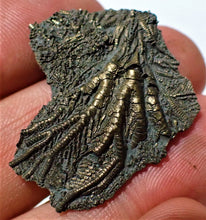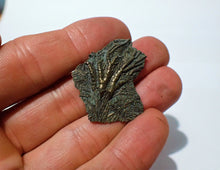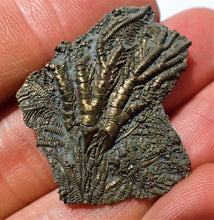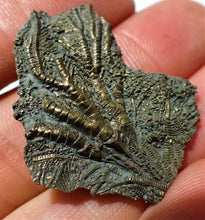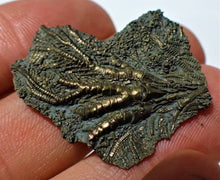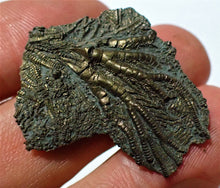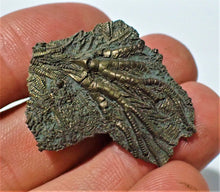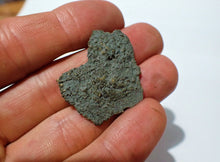
A stunning example of a crinoid fossil of the species Pentacrinites fossilis from the world-famous Jurassic Coast beach of Charmouth, Dorset UK.
The fossil measures 35 mm (1.38 inches) across, which is very small for a complete crinoid making this a juvenile animal. The fossil consists of a detailed head with a crown of arms and pinnules as well as the calyx (head attachment plate) and stem with tentacle-like cirri. It is preserved in calcite and pyrite giving it a subtle golden colour and shine. These crinoids are very sought after and not easy to find these days, and small juvenile examples like this are very uncommon.
Around 196 million years old (Sinemurian, Early Jurassic), this fossil would make a wonderful addition to any collection.
Crinoids are echinoderms closely related to starfish and sea urchins, and have been around for many hundreds of millions of years. They still live today in the deep seas around the world.








